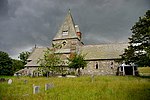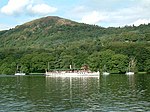Stott Park Bobbin Mill
Colton, CumbriaEnglish Heritage sites in CumbriaMuseums in CumbriaPreserved stationary steam enginesSteam museums in England ... and 4 more
Textile museums in the United KingdomUse British English from November 2017Watermills in CumbriaWoodturning

Stott Park Bobbin Mill is a 19th-century bobbin mill and now a working museum located near Newby Bridge, Cumbria, England. Built in 1835 the mill was one of over 65 such buildings in the Lake District, which provided wooden bobbins to the weaving and spinning industry primarily in Lancashire and Yorkshire. The building is today owned and run by English Heritage.
Excerpt from the Wikipedia article Stott Park Bobbin Mill (License: CC BY-SA 3.0, Authors, Images).Stott Park Bobbin Mill
Height Lane, South Lakeland Colton
Geographical coordinates (GPS) Address External links Nearby Places Show on map
Geographical coordinates (GPS)
| Latitude | Longitude |
|---|---|
| N 54.2855 ° | E -2.9659 ° |
Address
Stott Park Bobbin Mill
Height Lane
LA12 8AY South Lakeland, Colton
England, United Kingdom
Open on Google Maps










